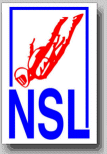
National
Skydiving
League
226 Pecan Street
Deland FL 32724
tel: (386) 801-0804
© 2003 - 2025
All Rights Reserved


226 Pecan Street
Deland FL 32724
tel: (386) 801-0804
© 2003 - 2025
All Rights Reserved

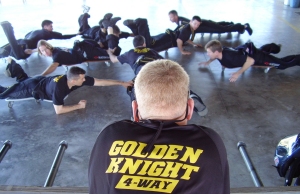
The US national 8-way team, Knight Trax with John Hart in the lineup, has started the next 2-week training camp in DeLand, and the Pilatus Porter has a very busy schedule. Knight Trax keeps the plane busy with back-to-back loads all morning long. Knight Trax member Thomas Hughes then begins the afternoon shift as the coach for Fastrax Blue, the US 4-way team in IPC's female category.
John Hart's next part of 4-way tips covers jump preparations and more general helpful advice. His instructions are a preview of the Meet-n-Greet event for the Mideast Skydiving League on April 12 at Start Skydiving, home of Team Fastrax.
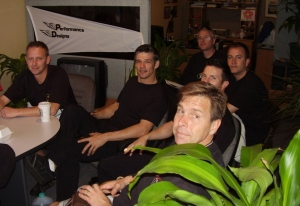
- See the picture of each formation
- Learn each transition between points
- Reinforce cross reference
- Work out grip plan
It is important to learn and use correct creeper technique. You want to reinforce good habits and not bad ones. The idea is to make your creeping session feel the way you want your skydive feel.
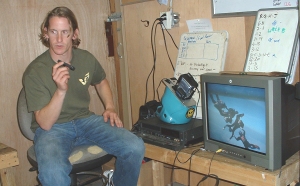
You can't practice the specific body movements nor vertical transitions. Many piece moves can feel awkward on creepers and can require more muscling on the ground than in the air.
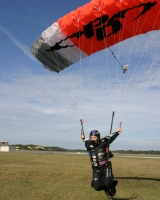
To stop, place both hands firmly on the ground. You may also stop by planting the toes of one foot, but be aware of your teammates. If somebody is behind you, you will need to use only your hands to stop.
Once the creeping is stopped, look at the grip and take a solid grip. Use the grip to shape the formation if necessary. Specifically, it the grip you have has been presented to closely, box it out. If it's too far, bring it in. This communicates to your teammate that he needs to make an adjustment in his move. Conversely if you feel somebody shaping you, then you know that you need to make the adjustment.
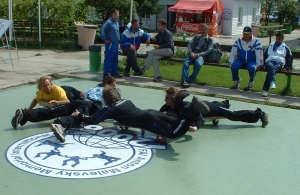
Now break down each transition (random to random, random to block, block to random). This is commonly known as angling. Move from the first point to the second point. The object is to the make the transition efficient, reducing everybody's movement as much as possible. Do this transition two more times. If everybody agrees that the transition is correct, then move to the next transition. Continue this process until you have done all the angles.
The idea of repeating each transition is to allow you to learn the precise movement that is required. In this way, you will be more likely to do that move, no less and no more. As you perform each transition try to really see the details of the move.
Is it a long translational move or is it very short? Do you not move at all? Does it require you to rotate? Exactly how much do you have to rotate?
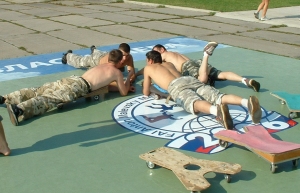
Grips are an important way of communicating with your teammates. When you take a firm solid grip, you will be communicating confidence. If you feel a teammate shape the formation, you know that an adjustment needs to be made for that transition.
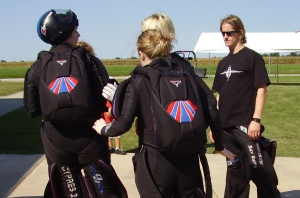
Start with an exit count and go through several pages of the skydive. A good creeping session will feel calm and mechanical with good key and grip discipline and great communication.

1. Purchase or build good creepers. The most important parts of a creeper are the wheels. Colson Hi-Tech Performa 3 X 7/8 are the best on the market.
2. Use a good creeper pad. It should be very smooth and at least 12 feet square, preferably 16 feet or more.
3. Stretch before getting on creepers. Stretching is one of the first recommended steps in a training day; this is covered elsewhere in this document. The most important muscles to stretch for creeping are the neck and the lower back.
4. Find a comfortable, balanced position on the creeper.
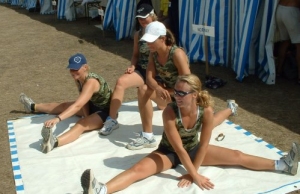
6. During transitions, move your center point to the proper place and stop, using hands and/or feet, before taking grips. This will hold true in freefall as well. When building formations (not when completing blocks), you should always stop moving as or before you take grips.
7. When necessary, take short breaks to stretch.
8. If a teammate is a few inches from where you would like them to be, tell them how you would like them to move, or move them gently. Similarly, be attentive to your teammates' needs, and be light on the creeper so they can move you if necessary.